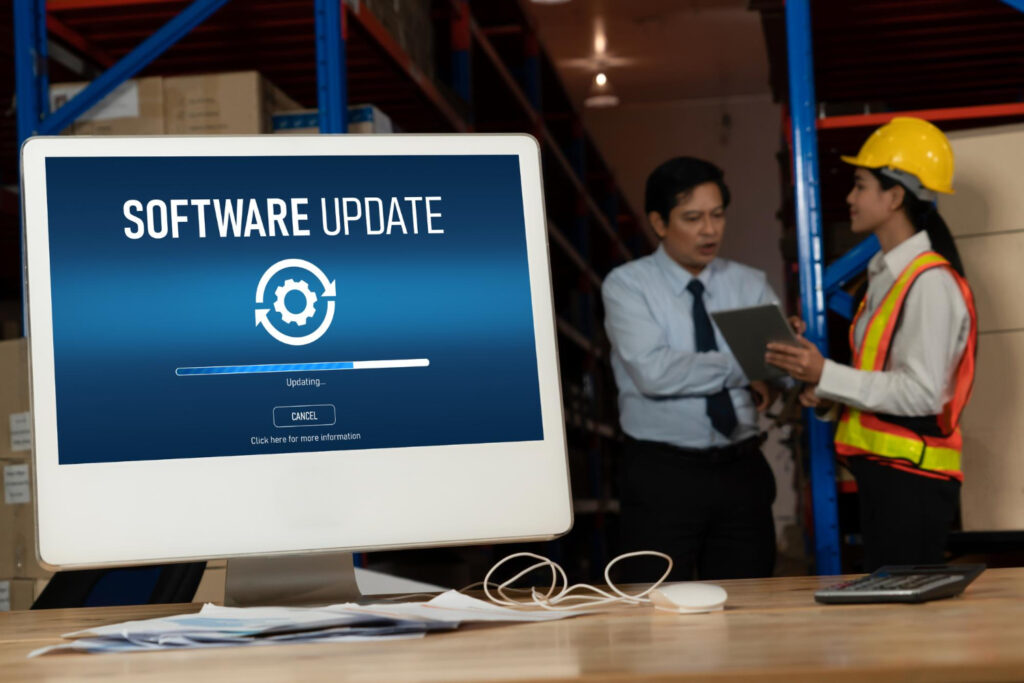
The common misconception that IT security is a concern reserved for large corporations is a risky oversight many small businesses make. However, the truth is quite the contrary. Small businesses, with their often limited resources and smaller scale, present a tempting target for cyber criminals. These criminals exploit vulnerabilities that come with the smaller security measures typically in place within these businesses. Understanding this, Labyrinth Technology is dedicated to empowering small businesses by providing essential guidance and support to fortify their IT security frameworks.
Small businesses might not have vast amounts of data compared to larger corporations, but the data they do hold is often less securely guarded, making it easier for cyber criminals to exploit. These businesses may lack dedicated IT departments or comprehensive cyber security policies, making them vulnerable to attacks. Additionally, small businesses serve as entry points or backdoors to larger companies in supply chain attacks, increasing their attractiveness to cyber criminals.
Implementing robust IT security measures does not have to be an overwhelming task. Here are some practical, straightforward strategies that can significantly enhance your business’s security posture:
Creating a culture of cyber security within a small business is not just about deploying the right technology; it’s about fostering a mindset and awareness that permeates every level of the organisation. This culture is fundamental because human error or negligence is often the weakest link in a business’s cyber security defences.
The goal of ongoing education is to ensure that cyber security remains a priority for everyone in the organisation. It should not be seen as solely the IT department’s responsibility but as a collective effort that involves every employee. Engaging training methods, such as interactive workshops, webinars, or even gamified learning platforms, can help maintain interest and engagement over time.
Moreover, creating a culture of cyber security also involves clear communication from leadership about its importance. Leaders should demonstrate good cyber security practices themselves and encourage an environment where employees feel comfortable reporting potential security threats or breaches without fear of reprisal.
In essence, building a cyber security culture is about creating a shared sense of responsibility and vigilance. It’s about making sure that every employee understands their role in protecting the business’s digital assets and feels equipped to act accordingly. This culture is a critical defence mechanism that can significantly reduce the risk of cyber incidents, safeguarding the business’s reputation, financial health, and legal compliance.
For small businesses, the investment in creating this culture pays significant dividends. It not only protects against the immediate threats of cyber attacks but also builds a framework of trust and security that can enhance business operations, foster innovation, and strengthen relationships with customers who trust the business to protect their data.
As cyber security is rapidly evolving , the practice of frequently changing passwords is being revaluated. While strong passwords—a complex mix of letters, numbers, and symbols—are crucial, the traditional advice to change them regularly is no longer seen as a best practice. This shift in perspective comes from the recognition that frequently changing passwords can lead to weaker security, as individuals may choose simpler, easier-to-remember passwords or use the same password across multiple accounts.
The alternative to this approach is to implement stronger, more sophisticated security measures. Multi-factor authentication (MFA) remains a highly recommended strategy, adding an extra layer of security by requiring an additional verification step, such as a code sent via text message or an authentication app. This method significantly increases account security by ensuring that access requires something the user knows (their password) and something they have (their phone or authentication device), making unauthorised access much harder.
Another key strategy is the use of password managers. These tools can generate and store complex passwords for each of your accounts, so you don’t have to remember them. You only need to remember one strong master password to access your password manager. This approach not only enhances security but also alleviates the burden of having to constantly remember and update multiple passwords.
By focusing on these advanced security measures, businesses and individuals can maintain strong security protocols without the need to frequently change passwords, thus balancing both convenience and security.
Regular software updates and patch management are critical components of cyber security for small businesses. In dynamic technology, vulnerabilities in software are continually being discovered. Hackers and cyber criminals exploit these vulnerabilities to gain unauthorised access to systems, steal data, or deploy malware. Keeping your software up to date is one of the most straightforward, yet effective, defences against these types of cyber threats.
Software developers regularly release updates that do more than just add new features or improve performance. These updates often contain patches for security vulnerabilities that have been discovered since the last version was released. By not updating your software, you leave your business exposed to attacks that exploit these vulnerabilities. It’s akin to leaving a window open in a fortified building; no matter how strong your other defences are, you’re still vulnerable to any attacker who knows about the open window.
Patch management is the process of managing a network of computers by regularly performing software updates to improve security and functionality. This includes ensuring all applications and systems are up to date with the latest patches. For small businesses, effective patch management is a balancing act. On one hand, you want to ensure that all software is as secure as possible; on the other, each update carries a small risk of compatibility issues or downtime.
Automating software updates is a practical solution that can help small businesses manage this balance. Many software programs offer options to automate updates, ensuring that they are applied as soon as they’re available without requiring manual intervention. This can significantly reduce the window of opportunity for attackers to exploit known vulnerabilities.

For small businesses, the impact of a cyber attack can be particularly devastating. Unlike large corporations that might have extensive resources to recover from a breach, small businesses can suffer irreparable damage to their reputation, financial health, and operational capacity. In fact, data breaches can result in direct financial losses from theft, fines for non-compliance with data protection regulations, and the indirect costs of downtime and lost business.
In the case of small business operations, network security measures are not just an added benefit but an important part of maintaining the integrity, confidentiality, and availability of business data. Implementing robust network security protocols is crucial in safeguarding your business against the evolving cyber threats.
One crucial strategy is network segmentation, which divides the network into separate subnetworks to isolate and protect sensitive data. This not only minimises the impact of potential breaches but also simplifies compliance with industry regulations.
Regularly updating the firmware on networking equipment is another vital practice. These updates often contain fixes for security vulnerabilities that could be exploited by attackers. Keeping firmware up to date ensures that network devices are protected against known threats, thereby securing the network infrastructure.
Utilising network monitoring tools is a cost-effective way for small businesses to maintain oversight of their network security. These tools can detect suspicious activities, such as unusual access attempts or large data transfers, enabling early intervention to prevent potential security incidents.
With the increasing prevalence of remote work, securing employees’ home networks has become a critical component of a comprehensive network security strategy. Educating employees on secure remote work practices, including the use of secure Wi-Fi networks and VPNs, is essential to protect business data outside the traditional office environment.
Incorporating these network security measures can significantly enhance the protection of a small business’s digital assets, ensuring the integrity and continuity of its operations.
Small businesses must adopt sophisticated data backup and recovery strategies to protect against data loss and ensure operational continuity. The foundational 3-2-1 backup strategy, advocating for multiple copies of data across different media and locations, remains crucial. Yet, integrating a variety of backup types, such as full, incremental, differential, and mirror backups, enhances this foundation by catering to diverse operational needs and data sensitivities. Regular testing of these backups is imperative to confirm their effectiveness in real-world recovery scenarios, ensuring businesses can rapidly resume operations post-disruption.
The intelligent use of cloud solutions offers scalable, cost-efficient, and remotely accessible backup options. However, this requires a strategic approach, balancing factors like data criticality, access frequency, and compliance with industry regulations. Security measures, including encryption and secure access protocols, protect data during transit and storage, safeguarding against breaches and maintaining regulatory compliance.
Automation of backup processes minimises human error and ensures consistent, timely backups, essential for maintaining up-to-date data protection. Beyond mere data backup, a comprehensive disaster recovery plan encompasses data restoration, application recovery, and business continuity, ensuring a seamless transition back to normal operations after any disruption.
Small businesses often experience changes in staff roles, responsibilities, or employment status. Each change can potentially open up vulnerabilities if access permissions are not adjusted accordingly. Regularly reviewing and updating access privileges ensures that only the right people have access to sensitive information at the right time. This practice helps prevent accidental or intentional misuse of data, ensuring that former employees cannot access systems post-employment, thereby safeguarding business data and systems.
The principle of least privilege (PoLP) is about giving employees access only to the information and resources necessary for their job functions. This approach minimises the risk of internal threats by limiting the amount of access to sensitive information. In the event of an external attack, such as malware or a hacker gaining access through a compromised account, the damage is contained to only those areas the account had access to. Implementing PoLP can significantly reduce the potential impact of both internal and external threats.
Access control is not just about preventing unauthorised access; it’s about ensuring that your business’s operations can continue smoothly and securely. By taking these steps, small businesses can significantly enhance their cyber security posture, protect against threats, and build a strong foundation for growth and success.
A comprehensive security suite is your first line of defense against a myriad of cyber threats, including viruses, malware, ransomware, and phishing attacks. These suites are designed to offer a multi-layered approach to security, combining several different types of protection in one package. Real-time scanning is crucial as it actively monitors your system for threats, providing immediate detection and removal, which is vital for preventing damage before it occurs.
Web browsing protection safeguards your business from online threats by blocking access to malicious websites, which could potentially download malware onto your systems. Email filtering is another critical component, as it screens incoming messages for suspicious content, attachments, or links, which are common vectors for viruses and phishing attempts.

In the context of small businesses, the development and maintenance of an incident response plan (IRP) are crucial for mitigating the impact of cybersecurity incidents. Given the limited resources and expertise available to smaller enterprises, a well-structured IRP can be the difference between a minor disruption and a catastrophic failure.
This plan acts as a pre-defined guide for quick and efficient action in the face of a security breach, crucial for limiting damages including financial losses, reputational harm, and regulatory fines. An effective IRP delineates clear roles and responsibilities within the team, ensuring everyone knows exactly what to do without delay. It’s not just about the immediate response but also about recovery and returning to normal operations, which might involve data restoration, system repairs, and bolstering security measures to avert future breaches. Besides practical benefits, having an IRP helps small businesses comply with industry regulations, avoiding penalties associated with non-compliance. Furthermore, it demonstrates to customers a serious commitment to data protection, thereby building trust.
Small businesses might mistakenly believe that their size makes them less of a target for cyberattacks. However, the opposite is often true. Small businesses are frequently targeted precisely because their security measures are expected to be less robust than those of larger corporations. Moreover, a successful attack on a small business can be particularly devastating. Small businesses typically have less financial resilience to recover from the financial losses associated with a cyber attack, which can include not only direct financial losses but also reputational damage and legal liabilities.
Professional IT support teams bring a depth of knowledge and experience across a broad spectrum of cyber security challenges, enabling them to provide personalised, effective solutions. Our goal at Labyrinth Technology is not just to provide IT support but to empower small businesses to take control of their cybersecurity. By offering tailored advice, implementing strategic security measures, and providing ongoing support, we enable small businesses to safeguard their operations against cyber threats. This support allows business owners to focus on growth and innovation, secure in the knowledge that their digital assets are protected.
Don’t let cyber security challenges hold you back from achieving your business goals. Contact Labyrinth Technology today to learn more about how we can empower your business with robust cyber security solutions tailored to your unique needs. Together, we can build a safer digital future for your business. Contact us today for a free consultation.
Empowering London Businesses with Efficient IT Solutions to Save Time and Stay Ahead of the Competition.